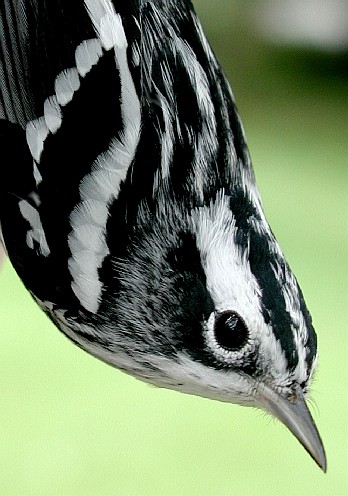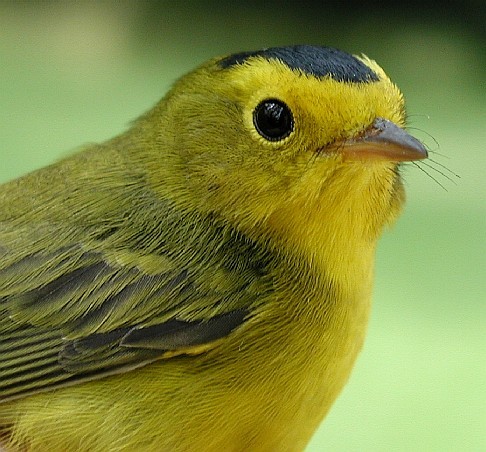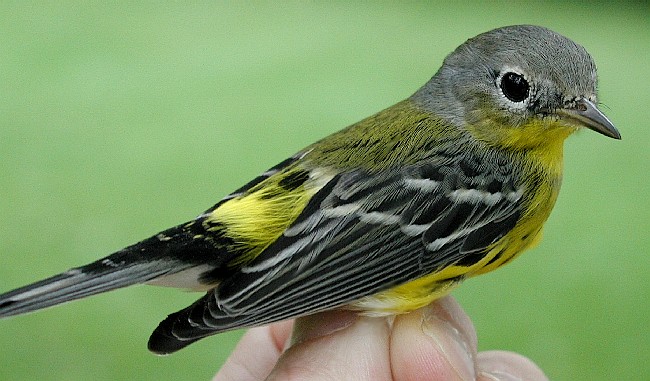 |
Pictorial Highlights for
|
 |
Pictorial Highlights for
|
Does this view of its undertail help?
Click here for answers to last week's quiz and this week's "extra credit"
This adult male Black-and-white Warbler banded on September 17 was striking in its definitive basic plumage, even without the black throat patch that is part of its breeding plumage

Adult male Connecticut Warblers,
like this one banded on September 16,
do not change their appearance
much from spring to fall
Neither do adult male Wilson's
Warblers
(this one was one of several
banded during the period)

A congener of the Connecticut,
the Mourning Warbler adult male is distinctive in both spring and fall.
Like the Connecticut, its black
throat patch will become more obvious in spring due to
wearing away of the light gray
tips on its black throat feathers
Of all of the adult males pictured
so far, the Magnolia (top photo) and Chestnut-sided (bottom photo)
warblers pictured below have
"lost", comparatively, more of their breeding plumage, but they still
retain solid field marks that
make their identification fairly straightforward
(not nearly so straightforward,
of course, for individuals of the other age/sex classes of these species!)

an HY Lincoln's Sparrow, banded on September 6
an HY Gray-cheeked Thrush, banded on September 15
an HY Philadelphia Vireo banded on September 6
and our first Nashville Warbler
(an HY male) on September 6,
one of eleven NAWAs banded during
the past two weeks
Extra credit: Palm Warbler (imm. female of the "Western" race).
Last Updated on 09/19/05
By Robert Mulvihill and Adrienne
Leppold